It has been seven months since Matthew Burke joined Geyer as its regional leader in Asia. He tells Stephanie Peh how the interior firm takes on an integrated approach that encompasses fields of strategic thinking, design implementation and change management to ensure overall effectiveness across projects.

July 30th, 2015
Top image: Matthew Burke. Photo: Justin Loh
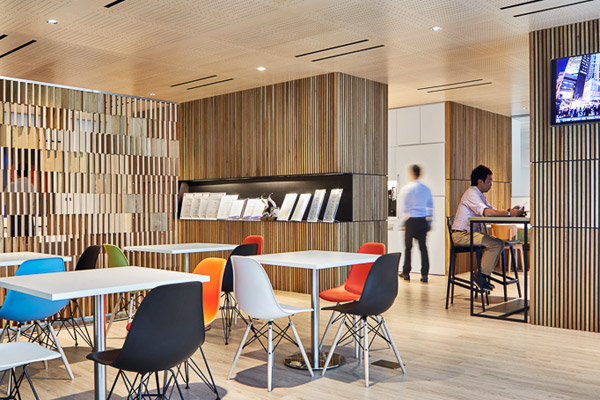
CapitaLand, Singapore. Photo: Owen Raggett
As Regional Leader for Asia in Geyer, tell us your role.
My role is to enhance and expand our presence in Asia in a sustainable and meaningful way. We focus on delivering quality work and to be in a position to support existing and potential clients.
This means splitting my time into three parts: the first is the continued development and nurturing of our incredible team. We make sure that they have the necessary support and tools to deliver award-winning work and exceed our clients’ expectations.
The second portion of time is reserved for engagement with our clients and projects. It is important to remain engaged in project work, as it provides the clearest snapshot of how we are performing as an organisation. We can assess if we are living our values – curiosity (always maintaining an open and inquisitive mind), insight (actively seeking learnings and solutions) and spirit (acting with both passion and humility) – and how they impact our clients and their projects.
The third is allocated to developing new and existing markets and actively seeking out strategic partnerships within the region.
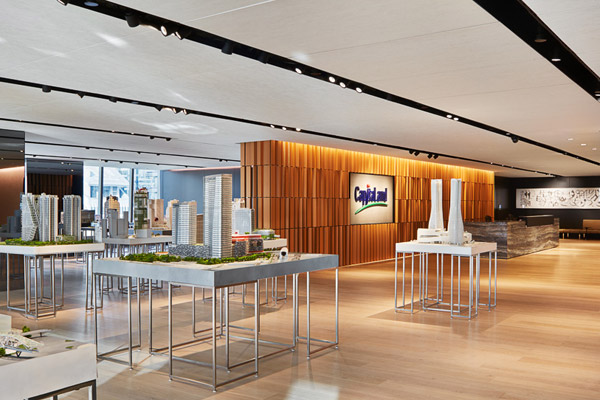
CapitaLand, Singapore. Photo: Owen Raggett
What projects do you focus on in Asia?
Workplace comprises the bulk of project work across Asia. However, we hired an ex-Geyer Alumni, Natalie Louey, recently – Natalie is a seasoned veteran of the hospitality industry and has worked on an impressive array of projects within Asia and the Middle East. These projects range from hotels to mixed use, private residential, food & beverage, and an award-winning lounge for Singapore Airlines. The team is already working on a hotel project in Bali and is also active in a number of key workplace projects.
For workplace we are, as always, focusing on work and clients that believe in the value design brings to their business. Our designs go beyond aesthetics and are foremost business solutions. Design is always a strategic tool – and strategy is at the core of Geyer since Peter and Sandy [Geyer] established the firm in 1977.

Westpac, Melbourne, Australia. Photo: Shannon McGrath
How do you measure a successful workspace?
Drivers vary from project to project, but some constants are: have we improved the end-user experience (keeping in mind that end users could mean a broad based constituency with both unique and common needs); have we enhanced the sense of community; have we captured the essence of the client’s company culture and brand; and have we satisfied the business needs and objectives?
If we can answer yes to these four questions, then there is a high likelihood that the project is a success.
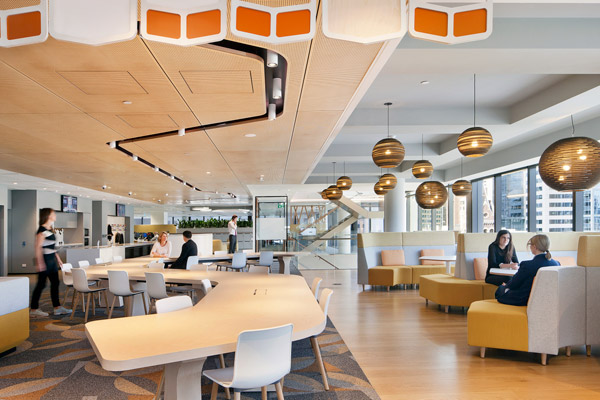
Westpac, Melbourne, Australia. Photo: Shannon McGrath
How does your background in East Asia Studies contribute to your work?
There are two interesting stories here. Let’s start with the general: I attended Wittenberg University – a school dedicated to liberal arts education. The beauty of a Liberal Arts education is that it focuses on teaching students how to become critical thinkers and problem solvers by using an interdisciplinary approach – this means taking a class on Chinese Politics along with Astronomy and Cultural Anthropology. This interdisciplinary approach continues to influence and affect how I view my work.
The best solutions often arise from a diverse team that can pull together seemingly disparate ideas to solve a problem or advance a project. Embracing different viewpoints and building on knowledge rather than defending knowledge (or the purity of a particular point of view) is a recipe for success in any profession – especially design.
As for the specifics, my choice of major and study in China helped to shape and evolve my worldview or mental model. Studying and then working in China forced me to challenge some basic assumptions that I held about a number of topics.
In essence, a foreign country, particularly one that has a different language and cultural base to your own, can act as a mirror if you allow it. It can highlight thoughts and/or beliefs that you originally held to be definitively true, and leave you grappling with your understanding of yourself, your relationship and place within a broader and global community. This can cause you to leave in frustration, or it affords you the opportunity to become a more complete global citizen.
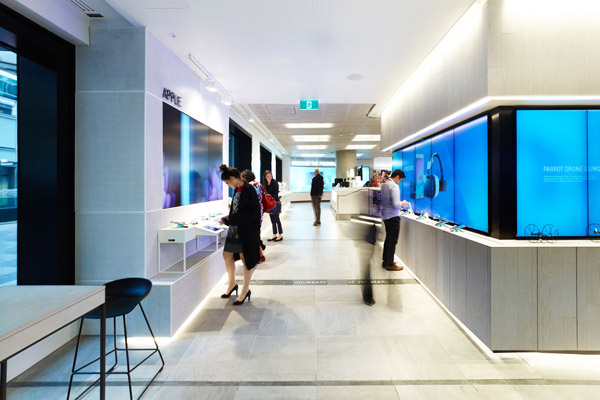
Telstra, Sydney, Australia. Photo: Joel Barbitta
The experience [of working and studying in China] has taught me that it is fundamentally important to acknowledge that you hold certain predispositions or mental models that cause you to view things differently from others around you – be this in your personal or professional life. Only by acknowledging that these differences exist, are we able to put ourselves in a position to change or evolve.
This may sound overly introspective and personal, but the fact is our mental models impact our approach to everything – including work, projects and problem solving. I would encourage your readers to visit drawtoast.com to learn more about the impact of mental models and the benefits of making these explicit.
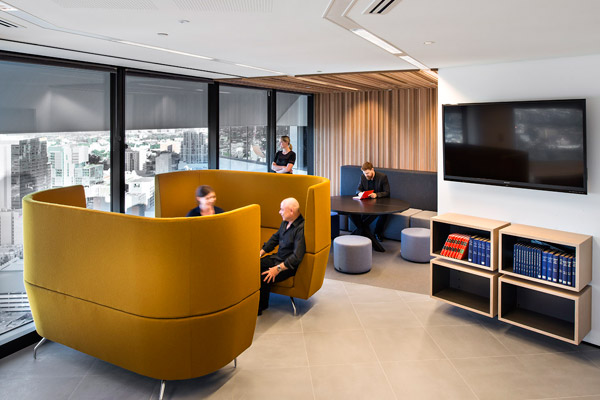
King & Wood Mallesons, Perth, Australia. Photo: Joel Barbitta
What workplace trends have you identified during your time in China?
One of the most interesting, emergent trends across the last decade (particularly following the global financial crisis) has been the push by Chinese corporations to leverage space to enhance their brand. This may seem trivial to a reader from a developed market, but this shift has led to the creation of some world-class projects within the Chinese market.
The move has also forced (the less progressive) multinational companies to recognise that China (and other Asian countries) is not the land of cheap labour and sub-par workspaces. Instead, there is the realisation that this is a dynamic region where the competition for talent is intense. You cut corners and squeeze investment at your own risk.
Wellbeing is also an emergent trend. The increase in pollution across Chinese cities has pushed Indoor Air Quality to the forefront of the conversation when approaching a new fit-out. This has impacted everything from the material market – there are now country-wide databases that are able to provide a product’s environment ratings. Companies making the extra commitment are strengthening the social bounds with their employees.
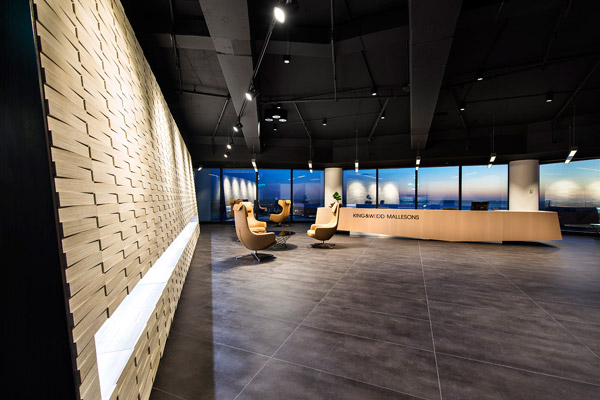
King & Wood Mallesons, Perth, Australia. Photo: Joel Barbitta
That is very interesting. During Design Conversations at Singapore Indesign Intimate 2015, we also highlighted the importance of analysing human behavior and psychology to create better workspaces. Tell us about Geyer’s “people-centric approach”.
In 1972, recounting a conversation he had with Eero Saarinen, Charles Eames was quoted as saying that “the role of the architect, or the designer, is that of a very good, thoughtful host, all of whose energy goes into trying to anticipate the needs of his guests…”. We believe this is one of the best explanations of the profession and it is at the heart of our approach with all clients. We aspire to help them create spaces and experiences that support, inspire and delight.
We promote the importance of engagement, observation and empathy in all projects. Rather than focusing on the end result (layouts and photo-realistic renderings), we utilise our rigorous engagement process to understand the business and end-users’ needs before exploring possible solutions. We allow the process and the corresponding learnings and discoveries to shape the end result.
This approach is complemented by Change Management activities and communication programmes that ensure we are identifying, reinforcing and building behaviors and habits that support and sustain the chosen solution(s).
This integrated approach is a powerful offering as the seamless integration between strategy, design and change management ensure that nothing is lost in translation as a project transitions across the spectrum. It also helps build confidence across the organisation as there is an understanding that our project team is with them for the entire journey.
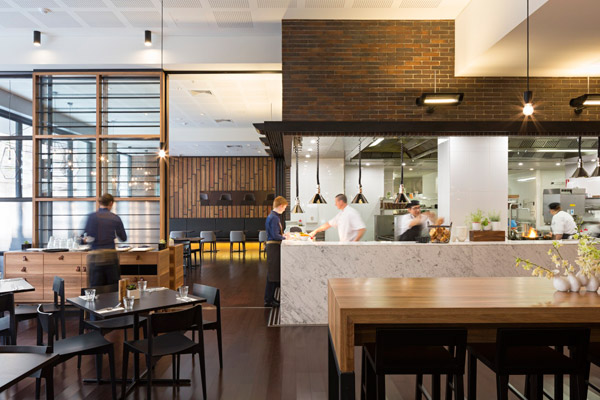
Next Hotel, Brisbane, Australia. Photo: Christopher Frederick Jones
Can you outline the direction you are taking Geyer in Asia?
We are excited by the growth of hospitality and education in the region and will continue to work closely with our workplace clients to support their growth across Asia.
We are also excited by the pace of airport development within the region. The multitude of projects provide an opportunity to raise the design and service threshold within airline lounges and create stimulating shopping and dining environments within these mass transportation hubs. It is not widely known that we are currently working on one of the largest duty free shopping areas, which is part of Sydney’s new international terminal.
That said, we are interested in sustained growth, where we are fuelled by the quality of our work, not the volume of it.
Geyer
geyer.com.au
A searchable and comprehensive guide for specifying leading products and their suppliers
Keep up to date with the latest and greatest from our industry BFF's!

In the pursuit of an uplifting synergy between the inner world and the surrounding environment, internationally acclaimed Interior Architect and Designer Lorena Gaxiola transform the vibration of the auspicious number ‘8’ into mesmerising artistry alongside the Feltex design team, brought to you by GH Commercial.

Marylou Cafaro’s first trendjournal sparked a powerful, decades-long movement in joinery designs and finishes which eventually saw Australian design develop its independence and characteristic style. Now, polytec offers all-new insights into the future of Australian design.

Suitable for applications ranging from schools and retail outlets to computer rooms and X-ray suites, Palettone comes in two varieties and a choice of more than fifty colours.

Following notable careers at Geyer and GroupGSA, Peter McCamley is striking out with Pablo Albani to form Studio P3, an interdisciplinary studio focused on driving business and interior design solutions.

Geyer was tasked with redesigning CUE’s leading Melbourne store and the response is all about curves, green tones and giving garments the space to shine.
The internet never sleeps! Here's the stuff you might have missed

With Milan 2024 only a few weeks away, we sneak a view of some of the most exciting pieces set to go on show – from lighting design to furniture, here are nine preview products.

Landing in the city’s financial district for the first time, The Sebel Sydney Martin Place has had its modern interiors completed by Stack Studio.

Suitable for dual and multi-screen configurations, this monitor arm from Colebrook Bosson Sanders breaks new ground in terms of usability and ergonomic design.